
After the October hurricane-driven debacle which sent last month’s payrolls print to the lowest in years, at just 12K, traders were expecting a solid bounce today, with many whispering a print that would come above the consensus estimate of 220K… and they were right: moments ago the BLS reported that in November, payrolls growth surged to 227K, the second highest print since March (after the upward September revision). Unlike previous month, most of which had all seen downward revision, the previous two months were revised higher, September was revised up by 32,000, from +223,000 to +255,000, and the change for October was revised up by 24,000, from +12,000 to +36,000. With these revisions, employment in September and October combined is 56,000 higher than previously reported.
Unlike previous month, most of which had all seen downward revision, the previous two months were revised higher, September was revised up by 32,000, from +223,000 to +255,000, and the change for October was revised up by 24,000, from +12,000 to +36,000. With these revisions, employment in September and October combined is 56,000 higher than previously reported.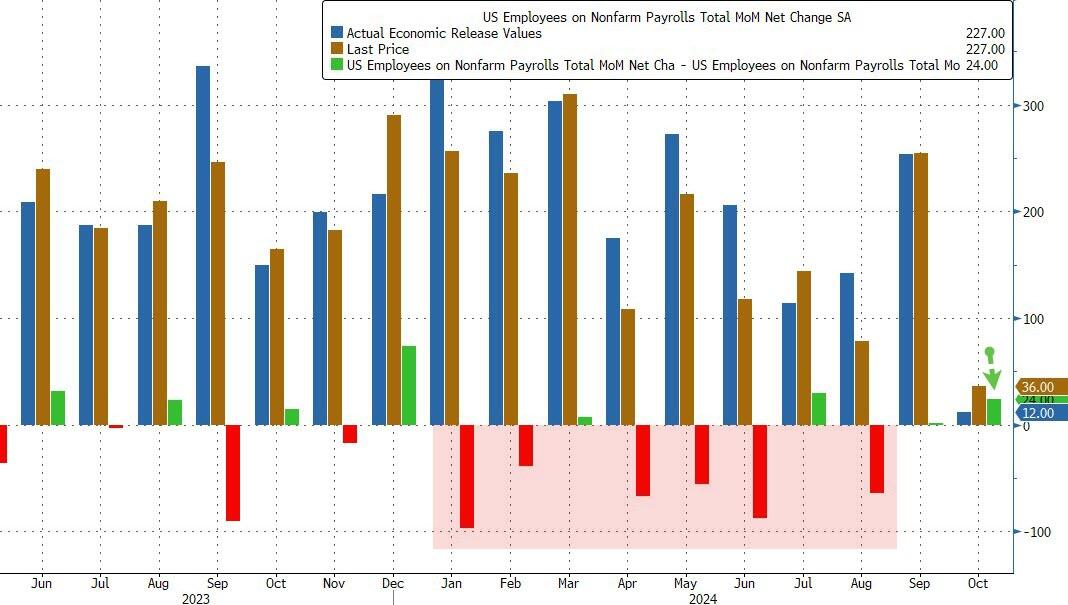 The rebound reflects swings related to the end of the Boeing strike and the hurricanes that skewed the October data; hiring was led by health care and social assistance, as well as leisure and hospitality and government (see below)Those looking for a clear indication whether the Fed will keep cutting or halt its easing cycle in two weeks, will have to wait because the rest of the jobs report was mixed: on one hand, unemployment rose from 4.1% to 4.2%, and above the 4.1% estimate (with Black unemployment at 6.4% rising in November, while the jobless rates for adult men (3.9 percent), adult women (3.9 percent), teenagers (13.2 percent), Whites (3.8 percent), Asians (3.8 percent), and Hispanics (5.3 percent) showed little or no change over the month)…
The rebound reflects swings related to the end of the Boeing strike and the hurricanes that skewed the October data; hiring was led by health care and social assistance, as well as leisure and hospitality and government (see below)Those looking for a clear indication whether the Fed will keep cutting or halt its easing cycle in two weeks, will have to wait because the rest of the jobs report was mixed: on one hand, unemployment rose from 4.1% to 4.2%, and above the 4.1% estimate (with Black unemployment at 6.4% rising in November, while the jobless rates for adult men (3.9 percent), adult women (3.9 percent), teenagers (13.2 percent), Whites (3.8 percent), Asians (3.8 percent), and Hispanics (5.3 percent) showed little or no change over the month)…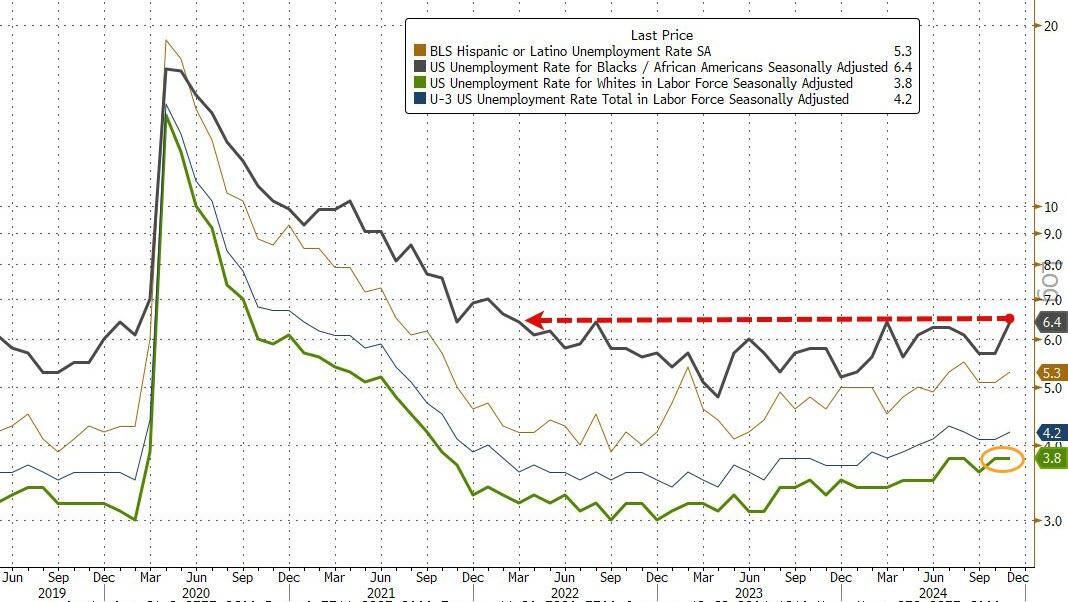 …but hourly earnings also rose, rising 0.4% MoM in November, above the 0.3% estimate, with annual wage growth flat at 4.0%, also above the 3.9% estimate, both indicating that wage growth pressures remain.
…but hourly earnings also rose, rising 0.4% MoM in November, above the 0.3% estimate, with annual wage growth flat at 4.0%, also above the 3.9% estimate, both indicating that wage growth pressures remain.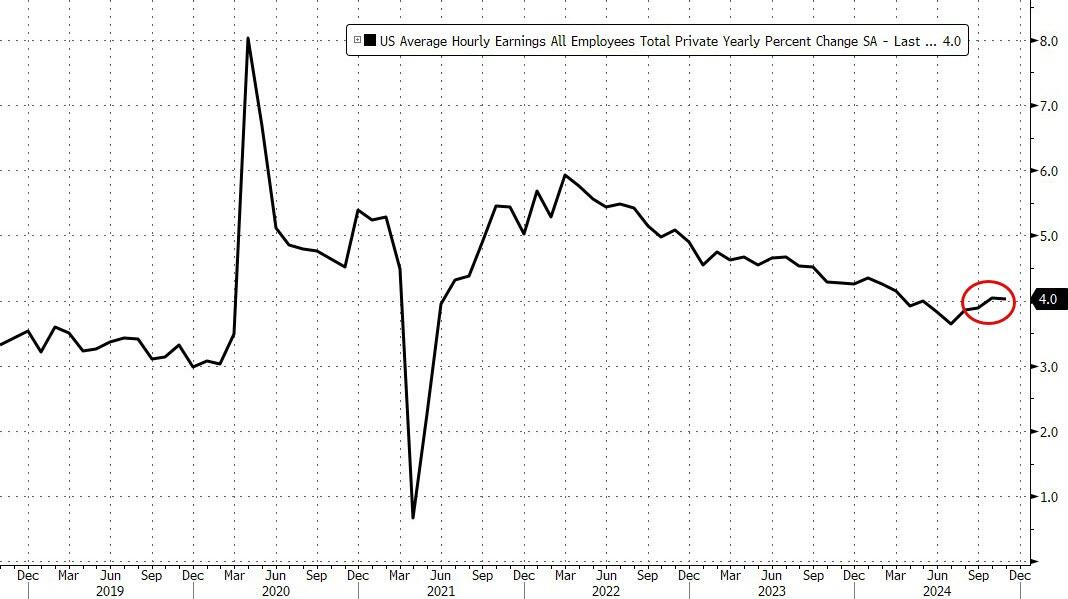 We should note that while the Establishment report gain of 227K payrolls was solid, the Household survey indicated a much bigger weakness, with the number of people employed tumbling by 355K to 161.141 million.
We should note that while the Establishment report gain of 227K payrolls was solid, the Household survey indicated a much bigger weakness, with the number of people employed tumbling by 355K to 161.141 million.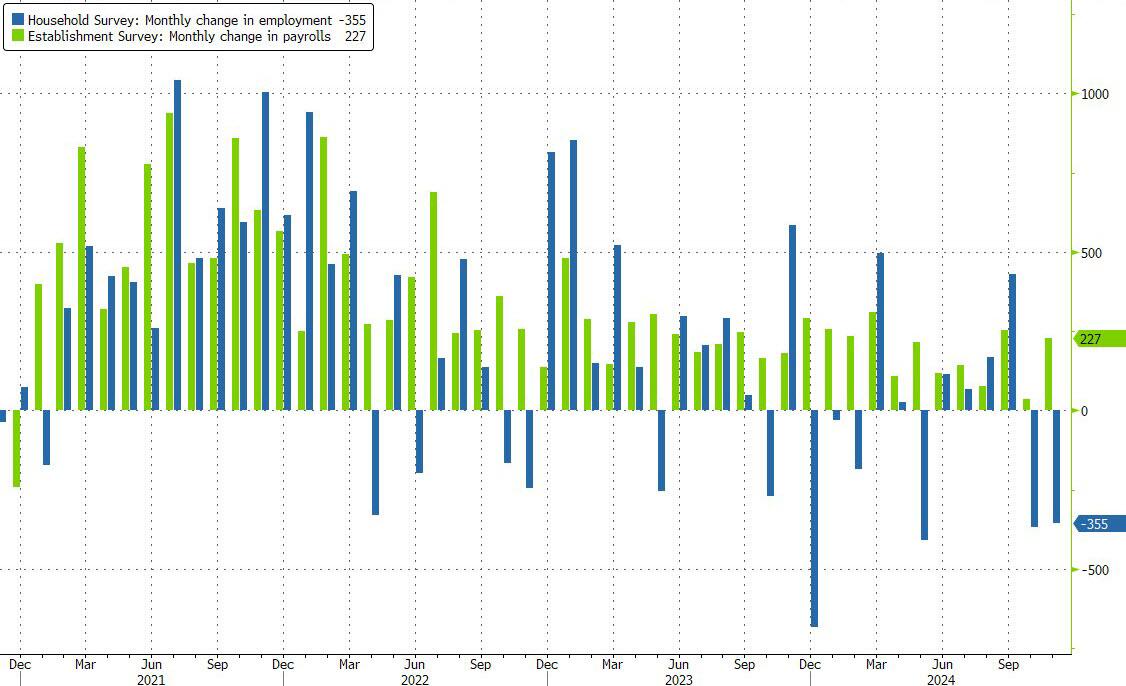 Tied to that, both the full-time and part-time series showed a notable drop (since these track the Household Survey), with full-time jobs dropping by 111K and part-time jobs down by 268K.
Tied to that, both the full-time and part-time series showed a notable drop (since these track the Household Survey), with full-time jobs dropping by 111K and part-time jobs down by 268K.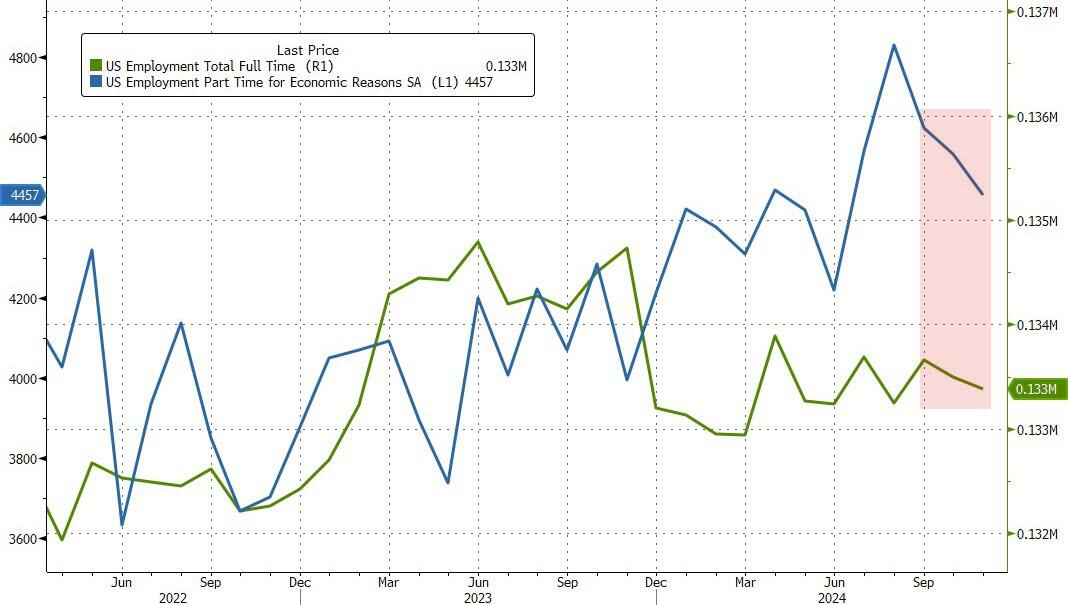 Taking a closer look at the report we find the following:
Taking a closer look at the report we find the following:
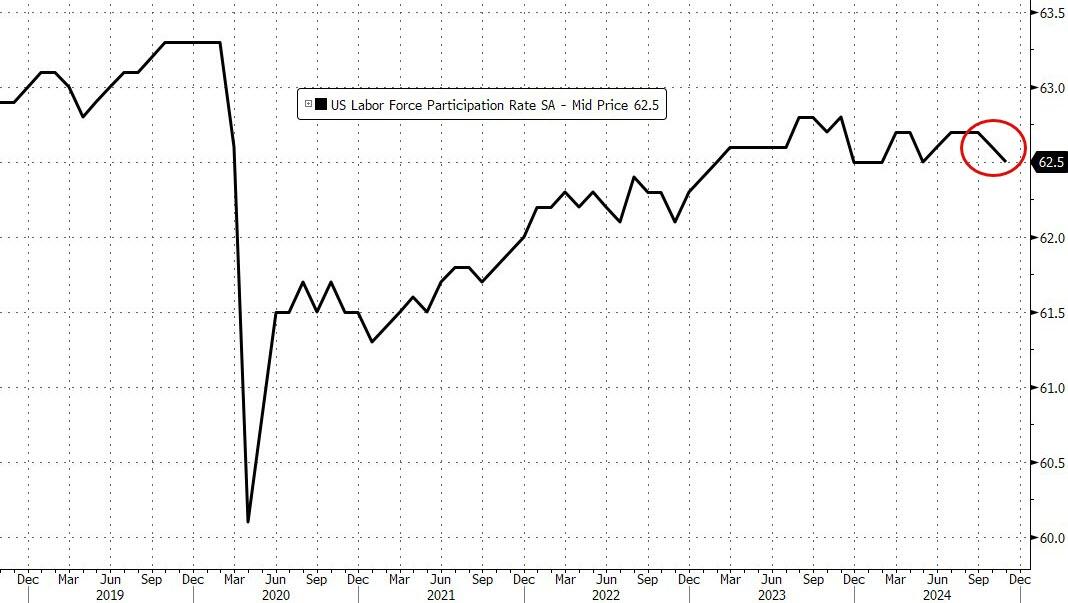
Taking a look at jobs by sector, we find that employment trended up in health care, leisure and hospitality, government, and social assistance. Employment increased in transportation equipment manufacturing, reflecting the return of workers who were on strike. Despite the onset of the Holiday season, retail trade cut 28,000 jobs the most jobs in a year, while durable goods manufacturing jobs jumped by 26,000 upon the conclusion of the Boeing strike. Yet while overall manufacturing employment rose due to an extra 32,000 transportation equipment roles, the sector was otherwise mixed; the semiconductor and electronic component sector lost 3,500 jobs. Here are some more details:
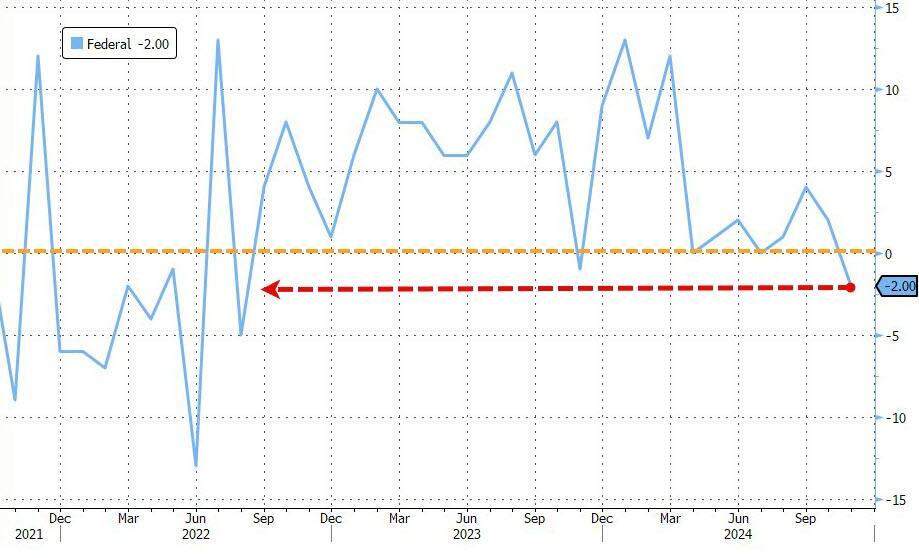
And visually: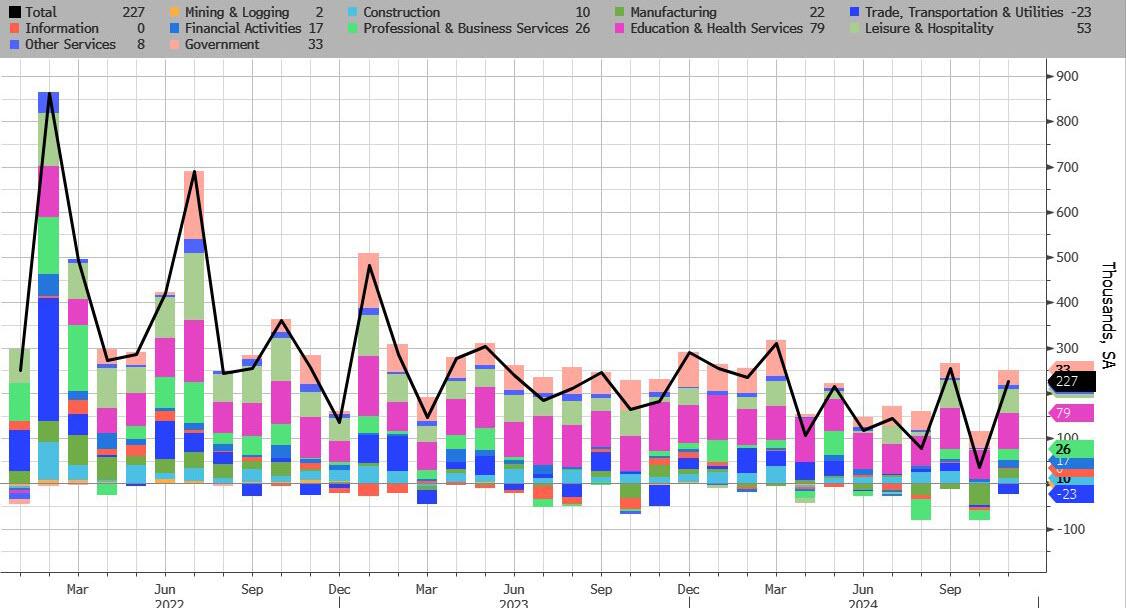 Finally, for those trying to figure out what all this means, here is perhaps the most important chart: after hitting a record high in August, the number of illegal alien workers has tumbled (even as native-born workers remain flat). This suggests that wage growth is about to surge as employers will now be “forced” to hire domestic employees, who unlike their Guatemalan peers, have the ability to negotiate higher wages.
Finally, for those trying to figure out what all this means, here is perhaps the most important chart: after hitting a record high in August, the number of illegal alien workers has tumbled (even as native-born workers remain flat). This suggests that wage growth is about to surge as employers will now be “forced” to hire domestic employees, who unlike their Guatemalan peers, have the ability to negotiate higher wages.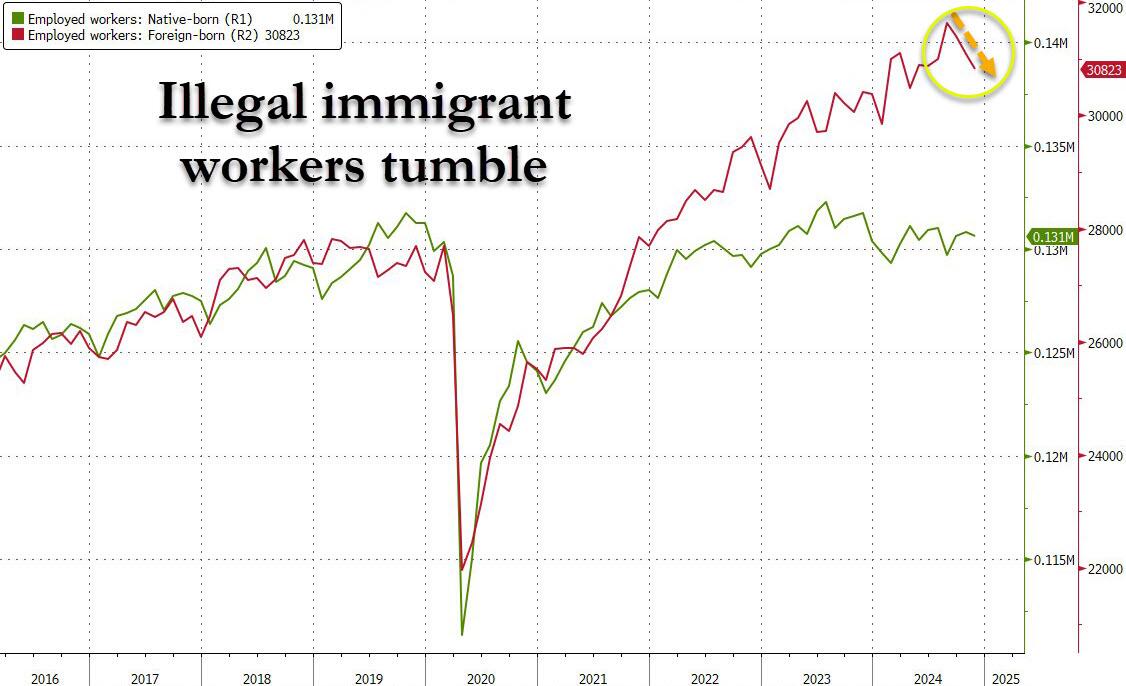 More By This Author:Bitcoin Nears Record High As Trump Nominates Crypto-Friendly Paul Atkins To Replace Gensler As SEC Chair
More By This Author:Bitcoin Nears Record High As Trump Nominates Crypto-Friendly Paul Atkins To Replace Gensler As SEC Chair
Futures Rise To Fresh Record High Ahead Of Powell Speech, French Government Collapse
ADP Employment Disappoints, US Manufacturing Sees Biggest Job Losses Since June 2023
















